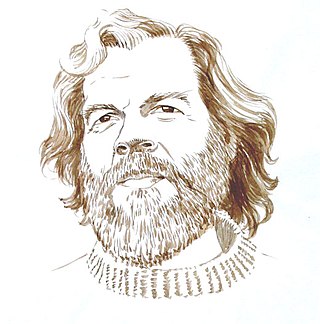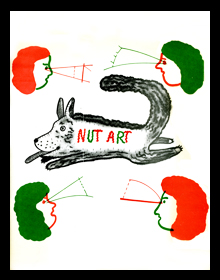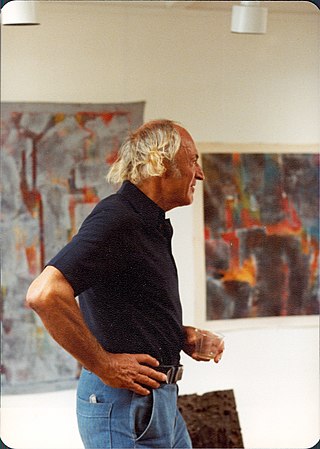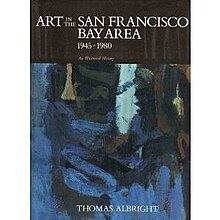Jean Conner née Sandstedt is an American artist.

Manuel John Neri Jr. was an American sculptor who is recognized for his life-size figurative sculptures in plaster, bronze, and marble. In Neri's work with the figure, he conveys an emotional inner state that is revealed through body language and gesture. Since 1965 his studio was in Benicia, California; in 1981 he purchased a studio in Carrara, Italy, for working in marble. Over four decades, beginning in the early 1970s, Neri worked primarily with the same model, Mary Julia Klimenko, creating drawings and sculptures that merge contemporary concerns with Modernist sculptural forms.
Grace Louise McCann Morley was a museologist of global influence. She was the first director of the San Francisco Museum of Modern Art and held the position for 23 years starting in 1935. In an interview with Thomas Tibbs, she is credited with being a major force in encouraging young American artists. The government of India awarded her the Padma Bhushan, its third highest civilian award, in 1982.
Wally Bill Hedrick was a seminal American artist in the 1950s California counterculture, gallerist, and educator who came to prominence in the early 1960s. Hedrick's contributions to art include pioneering artworks in psychedelic light art, mechanical kinetic sculpture, junk/assemblage sculpture, Pop Art, and (California) Funk Art. Later in his life, he was a recognized forerunner in Happenings, Conceptual Art, Bad Painting, Neo-Expressionism, and image appropriation. Hedrick was also a key figure in the first important public manifestation of the Beat Generation when he helped to organize the Six Gallery Reading, and created the first artistic denunciation of American foreign policy in Vietnam. Wally Hedrick was known as an “idea artist” long before the label “conceptual art” entered the art world, and experimented with innovative use of language in art, at times resorting to puns.

John Buck is an American sculptor and printmaker who was born in Ames, Iowa.
James Edward Grant was an American painter and sculptor active from the late 1950s into the early 1970s. Best known for his sculptural work in plastics, this work by no means defined him but was rather a natural endpoint of an exploration into increased dimensionality—starting from abstract canvases, moving through collages and bas-reliefs until the work finally came off the wall in sculptural form.
Antioch College/West, was a college and later university active from 1971 until 1989 and located in San Francisco, California, U.S..
Squeak Carnwath is an American contemporary painter and arts educator. She is a professor emerita of art at the University of California, Berkeley. She has a studio in Oakland, California, where she has lived and worked since 1970.
Howard Fried is an American conceptual artist who became known in the 1970s for his pioneering work in video art, performance art, and installation art.
John Rosenbaum was an American physicist, educator and kinetic sculptor, associated with the San Francisco Renaissance and the counterculture of the 1960s.
James C. Pomeroy was an American artist whose practice spanned a variety of media including performance art, sound art, photography, installation art, sculpture, and video art.
Lawrence Calcagno was a San Francisco Bay area abstract expressionist painter.

Bill Martin was a realist and visionary artist. "Bill Martin's images possess an inexplicable compelling power," wrote Walter Hopps, the Smithsonian Institution's Curator of the 20th Century American Art Collection.

Gage Taylor was a visionary artist known for his psychedelic-inspired landscapes. Art critic Thomas Albright wrote, "Taylor's landscape fantasies combined profuse detail with heavier, painterly surfaces and achieved a 'naive' and nostalgic flavor, like the work of a visionary Grandma Moses."

The Nut Artmovement was an artistic movement centered in Northern California, that flourished primarily in the late-1960s and early-1970s.
Edmund Shea was an American photographer based in San Francisco.
David Simpson is an American abstract painter and educator, who lives in Berkeley, California. His work is associated with the minimalist, monochrome, and color field movements. Since 1958, Simpson has had more than 70 solo exhibitions of his paintings in galleries and museums worldwide. His paintings have been included in hundreds of group exhibitions throughout the United States and Europe. During the early 1960s Simpson was included in two seminal group exhibitions: Americans 1963 at the Museum of Modern Art in New York curated by Dorothy Canning Miller and Post-Painterly Abstraction curated by Clement Greenberg in 1964; that traveled to the Los Angeles County Museum of Art the Walker Art Center and the Art Gallery of Toronto.

Paul Beattie (1924–1988) was an American artist. He was part of the New York art scene in the late 1940s through the early 1950s, and also participated as an artist, light show innovator, and filmmaker in the early West Coast Beat movement during the 1950s and 1960s. He continued to produce and show his work in northern California for several decades until his death in 1988.

Theodore "Ted" Odza (1915–1998) was an American artist, curator, and educator, known for his sculptures and abstract paintings. He taught art classes at University of California, Berkeley, and later served as the chair of the art department of Laney College. Additionally, he curated multiple national touring art exhibitions of Central European artists.
Beatrice Judd Ryan was an Australian-born American gallerist, art dealer, curator, arts philanthropist, and poet. She was best known for her work in prompting modern art, as a founding director of Galerie Beaux Arts in San Francisco, and as an organizer of the 1940 "Art in Action" program at the Golden Gate International Exposition (GGIE). She was nicknamed "Mrs. San Francisco", for her tirelessly support of West Coast artists.







